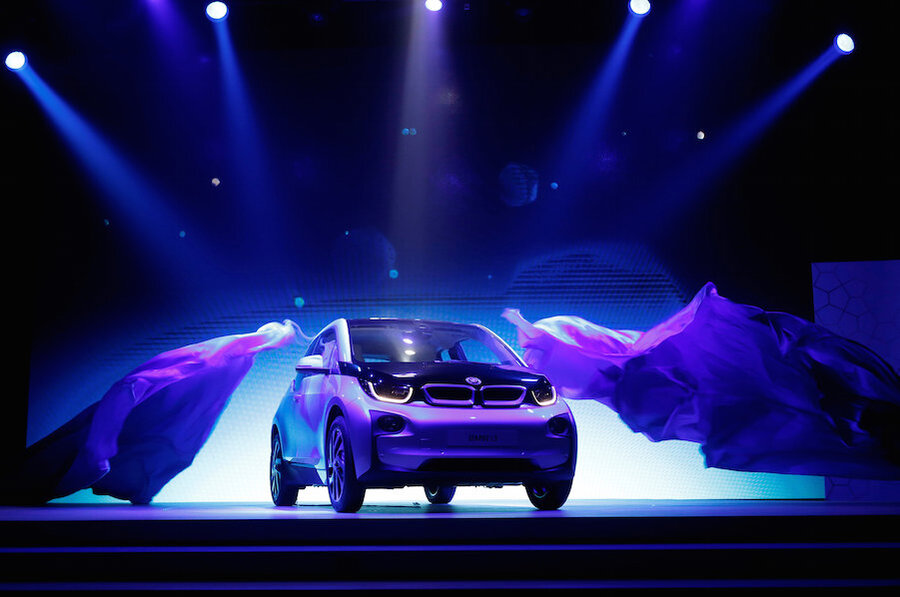Next BMW 3-Series to include all-electric Tesla Model 3 rival
Loading...
Tesla rocked the German luxury makers a couple of years ago when it became clear that its all-electric Model S sedan was truly appealing to a wide swath of enthusiastic luxury-car buyers.
With more than 125,000 sold since mid-2012, Tesla Motors has since launched the Model X electric crossover utility and announced plans for its next product, the Model 3 mass-market sedan.
Unveiled in April, that car will have a range of more than 200 miles and a price starting at $35,000 before any incentives.
BMW seems to be the carmaker whose products and owners Tesla has successfully targeted, and the Bavarian company now offers the i3 electric minicar, as well as the pricey i8 sport coupe with its sexy bird-wing doors.
It is also expected to introduce an all-electric compact crossover vehicle, likely called the i5, in 2018 or 2019, as the next entry in its "i" sub-brand of dedicated electric vehicles.
But BMW is also adding plug-in hybrids to all its volume vehicles, most recently its core and highest-volume model, the 3-Series sport sedan.
A new 3-Series is expected to launch in 2018, as the maker renews its core model every seven years like clockwork.
And, according to British outlet Auto Express, the next 3-Series lineup will include an all-electric version to be introduced after the main array of gasoline and diesel versions.
The next-generation 3-Series, code-named G20, will move to an all-new set of modular underpinnings, known as the Cluster Architecture, or CLAR.
Already used under the latest generation of the much larger 7-Series sedan line, the CLAR system incorporates a blend of conventional steel and much lighter carbon-fiber for its structural components.
BMW pioneered the use of large amounts of carbon fiber in the i3 electric car, which has a body shell of carbon-friber-reinforced plastic riding on an aluminum rolling platform that contains the running gear, suspension, battery pack, and some crash structures.
The carbon fiber in more conventional sedans will allow BMW to keep their weight down, improving fuel efficiency.
The CLAR modular system has been designed from the outset to accommodate not only combustion engines but also an all-electric variant.
No details have been released on battery size, motor output, drive system, or electric ranges, but those may emerge as the next 3-Series gets closer to production.
The mission of the all-electric BMW 3-Series, meanwhile, will clearly be to offer an alternative to the Tesla Model 3, whose production is to commence during the second half of next year.
That's the official timeline from Tesla, anyhow. It's a safe bet that BMW will be watching the progress of the Model 3 production closely.
The electric 3-Series will let the company move aggressively if large numbers of the 400,000 people who paid Tesla $1,000 each for a Model 3 reservation actually start taking delivery of their cars.
Buy some popcorn and settle in to watch the contest.
This story originally appeared on GreenCarReports.







